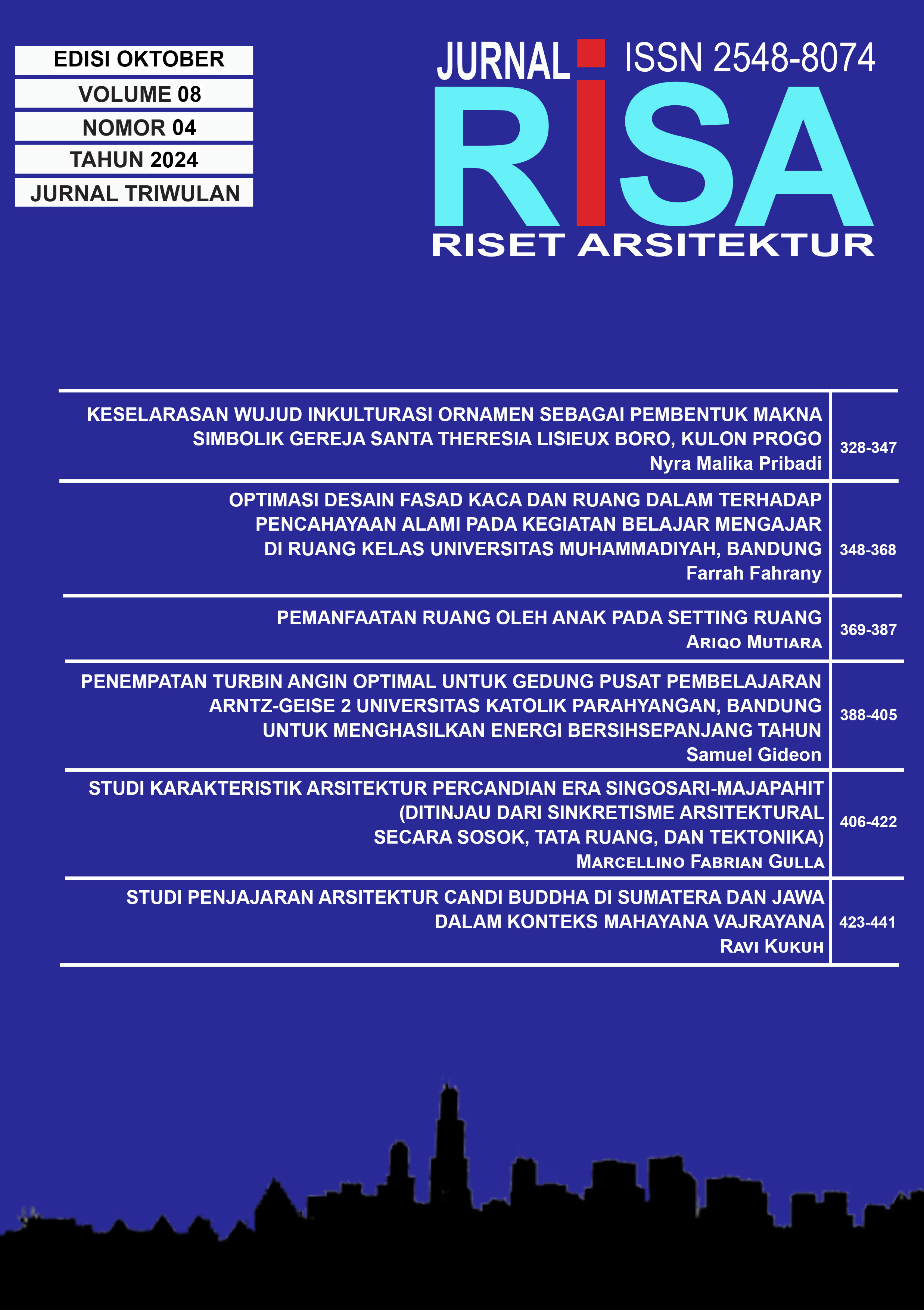THE CONFORMITY OF INCLULTURATION IN ORNAMENS AS THE MAKING OF SYMBOLIC MEANING OF SANTA THERESIA LISIEUX BORO CHURCH, KULON PROGO
DOI:
https://doi.org/10.26593/risa.v8i04.8576.328-347Abstract
Abstract - As the times progress, the Catholic Church is increasingly open to changes. The Second Vatican Council which was held in 1965 produced a new term, namely; inculturation, which means the encouragement of the Church to renew the Church by involving integration between local culture and Catholic teachings. Inculturation encourages the formation of a Church that continues to change with the times, by involving the active role of its people through a liturgy that can be more internalized by the community, thus forming a Church that is rooted in the local community and integration of faith experience with local breath can occur. Inculturation makes the Church part of the local culture and integrated identity of a community group.
The purpose of this research is to document and reveal the embodiment and harmony of inculturation found in the architectural ornaments of the Santa Theresia Lisieux Boro Church in Kulon Progo. The choice of this object was made due to the lack of documentation of this church, even though it has a rich history and has been established since 1927. The Santa Theresia Lisieux Boro Church has strong influences from European architecture, especially the Netherlands because of its history, and over time has experienced changes influenced by Javanese culture.
This research was conducted using qualitative methods in the form of descriptions, comparisons, analysis, and interpretations. The theory used is acculturation theory which is the basis of the inculturation process. The supporting theories used are the principles of Javanese locality, in the form of Javanese architectural ornamentation and colors, church zoning theory, and semiotic theory regarding historical, historicism, and material approaches. The object of study is divided into the scope of study from zoning in the Church which is divided according to its sacredness, namely the Narthex Zone, Nave Zone, and Sanctuary Zone, which is then divided again based on the scope of the building, namely the roof area, the wall area, and the floor area.
The results of the study show that the inculturation of the Santa Theresia Lisieux Boro Church, Kulon Progo appears in its relationship with the sacred hierarchical zoning of the church, and the scope of the building as a manifestation of the insertion of Javanese culture into church architecture. Inculturation is manifested in the use of local decorative styles such as lung-lungan floral motives, gunungan wayang, and ornamental depiction styles. Material selection based on locality is also carried out by using stone paste and carved teak wood. The research also suggests that there is harmony between ornaments that are studied based on shape and meaning, color and material, and hierarchical placement has been realized, except for the ornaments in the Nave Zone.
The benefits of this research can provide researchers, designers and readers with an understanding of inculturation and its harmony in the architectural ornamentation of the Santa Theresia Lisieux Boro Church in terms of form and meaning. An understanding of the importance of integrating local culture and values into buildings that become the identity of a region is also obtained. This research is expected to be an inspiration for designers to integrate and adopt local cultural elements that are in harmony in terms of form and meaning with the teachings and sacredness of the Catholic religion in church architecture as the identity of a region.
Keywords: inculturation, ornament, form and meaning, church architecture, Java
Additional Files
Published
Issue
Section
License
Copyright (c) 2024 Nyra Malika Pribadi

This work is licensed under a Creative Commons Attribution-NonCommercial-ShareAlike 4.0 International License.












